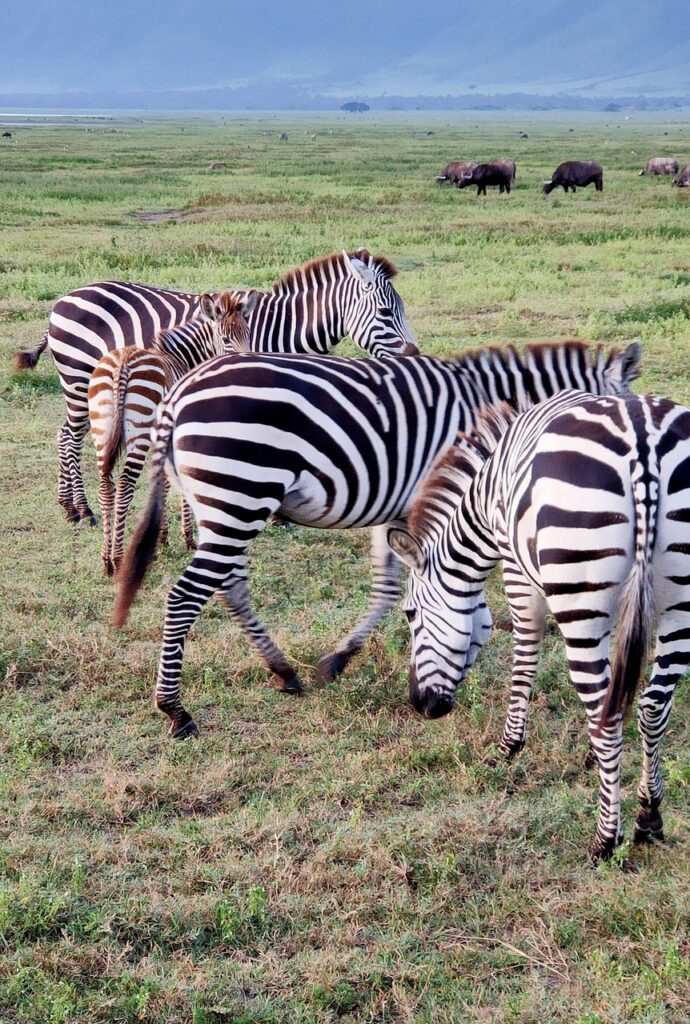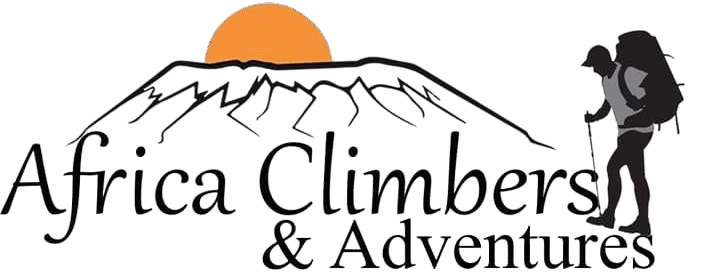Rongai Route 7 Days Overview
The 7 Days Kilimanjaro Rongai Route is a peaceful and scenic trekking experience starting from the northern side of Mount Kilimanjaro, close to the Kenyan border. Known for its gradual ascent, low traffic, and drier conditions, the Rongai Route is perfect for trekkers seeking a less crowded path to the summit.
This 7-day itinerary includes an extra acclimatization day, significantly boosting your chances of successfully reaching Uhuru Peak. The trail passes through dense forests, open moorlands, alpine desert, and glacial landscapes before reaching the summit and descending via the Marangu Route, offering a well-rounded Kilimanjaro experience.
Ideal for both novice and seasoned trekkers, this route blends breathtaking scenery, a high success rate, and a true sense of wilderness.
Tour Highlights
Starts from Kilimanjaro’s remote northern side
Excellent for acclimatization and summit success
Less crowded trail with tranquil wilderness
Varied scenery: forests, alpine desert, glaciers
Summit from Kibo and descend via Marangu Route
One extra acclimatization day for altitude adjustment
✅ 7 Days Kilimanjaro Rongai Route – Day-by-Day Itinerary
Day 1: Rongai Gate (1,950m) – Simba Camp (2,600m)
Depart from Moshi or Arusha and drive to Rongai Gate, near the Kenya-Tanzania border. Begin the hike through lush pine forests before arriving at Simba Camp on the edge of the moorland zone.
Hiking Time: 4–5 hours
Elevation Gain: +650m
Habitat: Forest
Meals: Lunch & Dinner
Overnight: Simba Camp
Day 2: Simba Camp – Second Cave Camp (3,450m)
Today you trek steadily uphill across the heathland, with views of Kibo Peak ahead. The open moorland offers a good chance to see wildlife and unique flora.
Hiking Time: 5–6 hours
Elevation Gain: +850m
Habitat: Moorland
Meals: Breakfast, Lunch & Dinner
Overnight: Second Cave Camp
Day 3: Second Cave – Kikelewa Camp (3,600m)
A shorter day to allow for proper acclimatization. Continue trekking through beautiful moorland as the trail becomes steeper and more rugged. Camp is set in a sheltered valley beneath towering cliffs.
Hiking Time: 3–4 hours
Elevation Gain: +150m
Habitat: Moorland
Meals: Breakfast, Lunch & Dinner
Overnight: Kikelewa Camp
Day 4: Kikelewa Camp – Mawenzi Tarn Camp (4,330m)
A steep climb up grassy slopes takes you to the base of Mawenzi Peak, Kilimanjaro’s second highest summit. The campsite at Mawenzi Tarn lies beneath towering spires and offers a dramatic alpine setting.
Hiking Time: 4–5 hours
Elevation Gain: +730m
Habitat: Alpine Desert
Meals: Breakfast, Lunch & Dinner
Overnight: Mawenzi Tarn Camp
Day 5: Acclimatization at Mawenzi Tarn Camp
Spend the day resting and exploring the surrounding area. Short acclimatization hikes are encouraged to higher altitudes before returning to camp. This extra day increases your success rate for summit day.
Hiking Time: 1–2 hours (optional hike)
Elevation: Variable
Habitat: Alpine Desert
Meals: Breakfast, Lunch & Dinner
Overnight: Mawenzi Tarn Camp
Day 6: Mawenzi Tarn – Kibo Hut (4,700m)
Cross the barren saddle between Mawenzi and Kibo, arriving at Kibo Hut. After an early dinner and briefing, rest before your midnight summit push.
Hiking Time: 4–5 hours
Elevation Gain: +370m
Habitat: Alpine Desert
Meals: Breakfast, Lunch & Dinner
Overnight: Kibo Hut
Day 7: Summit Day – Kibo Hut – Uhuru Peak (5,895m) – Horombo Hut (3,720m)
Around midnight, begin your summit attempt. Reach Gilman’s Point (5,681m) and continue to Uhuru Peak, the highest point in Africa. After photos and celebration, descend back down to Horombo Hut for a well-earned rest.
Hiking Time: 12–14 hours
Elevation Gain: +1,195m, then descend -2,175m
Habitat: Arctic to Moorland
Meals: Breakfast, Lunch & Dinner
Overnight: Horombo Hut
(Optional Day 8): Horombo Hut – Marangu Gate – Transfer to Hotel
On the following morning, descend through the forested trail to Marangu Gate, where you’ll receive your summit certificate before being transferred back to your hotel.
Short Important Information
Acclimatization is Key
Altitude sickness is the biggest challenge on Kilimanjaro. Our itineraries are designed to help your body adjust gradually with the “pole pole” (go slow) approach. Longer routes have higher summit success rates.Proper Gear is a Must
The weather can change quickly, from hot to freezing cold. Pack layered clothing, waterproof gear, thermal sleeping bags, and quality hiking boots. A complete packing list will be provided after booking.Physical Fitness Helps
You don’t need to be an athlete, but good physical preparation is essential. We recommend cardio exercises and long walks or hikes before your trip. Mental strength is just as important as physical fitness.Weather Conditions
Expect a variety of climates as you climb—starting from tropical forests to arctic zones near the summit. Nights can be extremely cold, especially above 4,000 meters. Always be prepared for rain and wind.Guides and Porters Included
All our packages include experienced guides, porters, and a cook for your comfort and safety. They’ll carry your heavy bags and set up camp or arrange hut stays. Tips for the crew are highly appreciated and customary.Medical and Safety Measures
Our team carries a first aid kit, pulse oximeters, and oxygen cylinders for emergencies. Your health is monitored daily during the trek. In case of severe altitude sickness, emergency descent will be arranged.Park Fees and Permits Covered
All government park fees, rescue fees, camping or hut charges are included in your package. No hidden costs. Your climb is fully authorized and compliant with Kilimanjaro National Park regulations.
Frequently Asked Questions (FAQs)
Why is 7 days recommended over 6 days on the Rongai Route?
The 7-day itinerary includes an extra acclimatization day, which improves the body’s ability to adjust to high altitude and increases summit success.How difficult is the Rongai Route compared to others?
Rongai is considered one of the easiest and most gradual routes, especially with the 7-day option.What makes the Rongai Route special?
It is less crowded, drier, and passes through unique northern scenery, making it ideal for solitude and photography.Where does the summit attempt start?
From Kibo Hut, around midnight on Day 6, with a hike to Uhuru Peak, returning to Horombo Hut the same day.Is it possible to rent gear?
Yes. You can rent sleeping bags, trekking poles, jackets, and more in Moshi or Arusha.What kind of food is provided?
Meals are freshly prepared daily and include soups, rice, pasta, vegetables, meat, fruits, and hot drinks.Can this route be combined with a safari?
Absolutely. Many trekkers follow the climb with a short Tanzania safari to relax and explore the wildlife.
REQUEST FREE QUOTE
Our Whatsapp chat available 24/7

Price Includeds
Park entry fees and government taxes
Private 4×4 safari vehicle with a pop-up roof
Professional English-speaking driver-guide
Full-board accommodation during the safari
Bottled drinking water during game drives
Airport transfers (arrival and departure)
Price Excludeds
International and domestic flights
Travel insurance and visa fees
Tips for the guide and lodge staff
Alcoholic and soft drinks at lodges
Personal expenses (e.g. souvenirs, laundry)
Optional activities (e.g. balloon safari, Maasai village visit)
